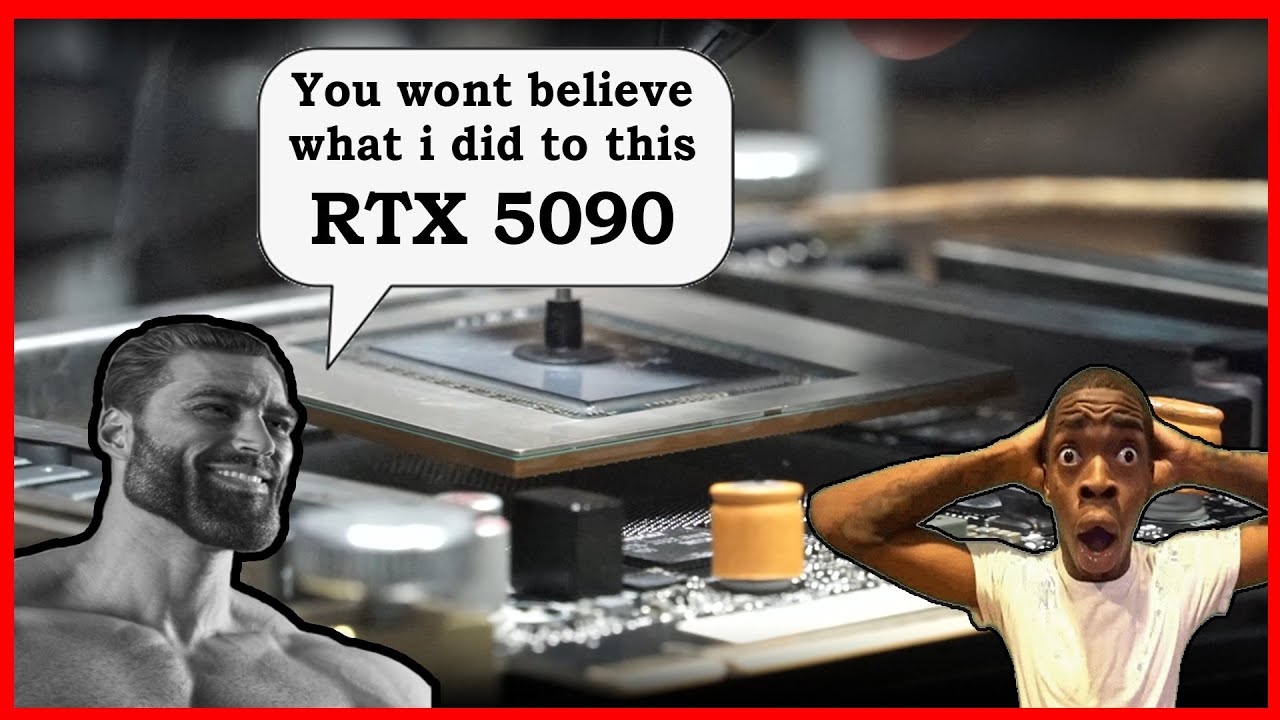A broken RTX 5090 recently landed on the desk of Northwest Repairs, run by “Tony” who also serves as the face of their chaotic YouTube channel. NorthWest specializes in semiconductor work, particularly GPUs that need to be brought back from the dead. So, when a PNY RTX 5090 came in with a cracked PCB and no signs of life, Tony got to work and took us along the crazy roller-coaster ride that ensued with repairing this 5090.
RTX 5090s are no stranger to controversy. They’ve had their fair share of melting power connectors, a legacy carried forward from the direct predecessor—the RTX 4090. However, this was somehow not an overheating GPU drunk under the weight of its own power addiction, but rather a cracked PCB, which is an increasingly common failure point on hefty modern GPUs. Cracks in the PCB can interrupt signal traces buried deep inside the board, leading to seemingly random failures that are tough to diagnose and even tougher to fix.
I removed the core from RTX 5090 to see whats underneath it – YouTube  Watch On
Watch On
Tony began by taking the card apart, starting with the shroud, which eventually revealed the cooler’s underlying design—which was… fine. The memory contact plate wasn’t touching the vapor chamber properly, meaning that thermal transfer to the memory was virtually nonexistent. Higher-end variants of the 5090 might not share these oversights as they’ll feature more robust cooling systems. The VRMs and surface components, on the other hand, were solid, so power testing was the next step.
Don’t miss these
-
 Amazon Prime Day Best graphics card deals 2025 — Cheap Nvidia, AMD, and Intel gaming GPUs
Amazon Prime Day Best graphics card deals 2025 — Cheap Nvidia, AMD, and Intel gaming GPUs -
![]() Best Amazon Prime Day Deals Live
Best Amazon Prime Day Deals Live -
 Get a discounted RTX 50-series laptop in Best Buy’s answer to Prime Day
Get a discounted RTX 50-series laptop in Best Buy’s answer to Prime Day
Even while idle, the GPU was pulling around 5 amps, which is high but normal for a power-hungry beast like the 5090. Tony had to bump his power supply tester up from 4A to 8A just to get it to start, and 8 amps were needed to manage the initial power spike. The card powered on, lights came on, fans spun – but there was no display output, despite the monitor’s LED turning on. This meant the GPU was on but just not posting, leading the repairman to believe this was a VRAM issue.

